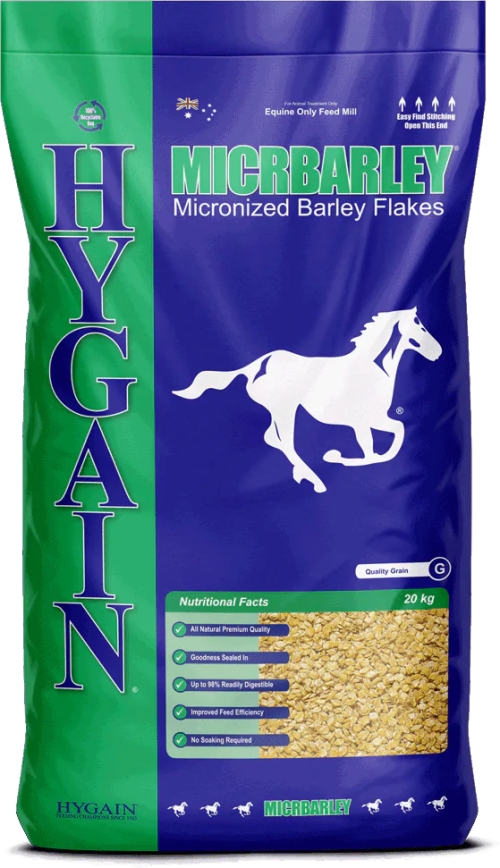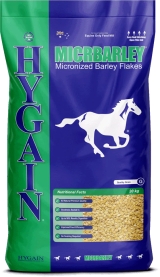




MICRBARLEY® flakes are readily digestible with improved feed efficiency and reduced risk of colic, acidosis and laminitis.
Micronizing is a “Short Time, High Temperature” patented process using the grains moisture and infrared heat to achieve conditions essential for the optimal cooking of starch and starch gelatinisation. During processing the grain becomes soft and pliable, causing the reconfiguration of the starch structure (gelatinisation). Immediate flaking fully gelatinises the starches so as to significantly enhance the digestibility and nutritional value of the feed.
The small intestine is the epicentre of nutrient digestion in the horse. Vitamins, minerals, fats, protein and starch are readily absorbed in the small intestine. Research shows that feed digested in the small intestine significantly increases the rate of glucose (energy) absorption. The starch in MICRBARLEY® is over 95% digested in the horse’s small intestine where as the starch in whole, crushed or steam flaked barley is only 20-30% digested. The remaining starch is then fermented in the large intestine, this in turn increases the burden on the large intestine producing elevated levels of lactic acid, gas and heat.
MICRBARLEY® flakes transfer the site of digestion back to the small intestine improving feed efficiency and reducing the burden on the hind gut resulting in fewer incidences of dietary induced problems such as colic, acidosis, laminitis, loss of appetite, nervousness, fatigue and reduced performance.
HYGAIN® MICRONIZED feeds and MICRGRAIN’S provide nutritional benefits for all classes of horses.
| Crude Protein | 11% |
| Crude Fat | 2% |
| Max Crude Fibre | 9% |
1kg of whole or steamed flaked barley can be replaced with approximately 750grams of HYGAIN® MICRBARLEY®. HYGAIN® MICRBARLEY® should be fed with roughage and can be mixed with other grains to meet nutrient requirements.
Feeding amount may be influenced by age, breed, desired body condition, exercise intensity, gestation and lactation status, pasture/hay quality and availability and climate. Care should be taken to match feed intake to dietary requirements. Reduce grain intake on rest days, if horses gain weight and / or training regime is interrupted.
